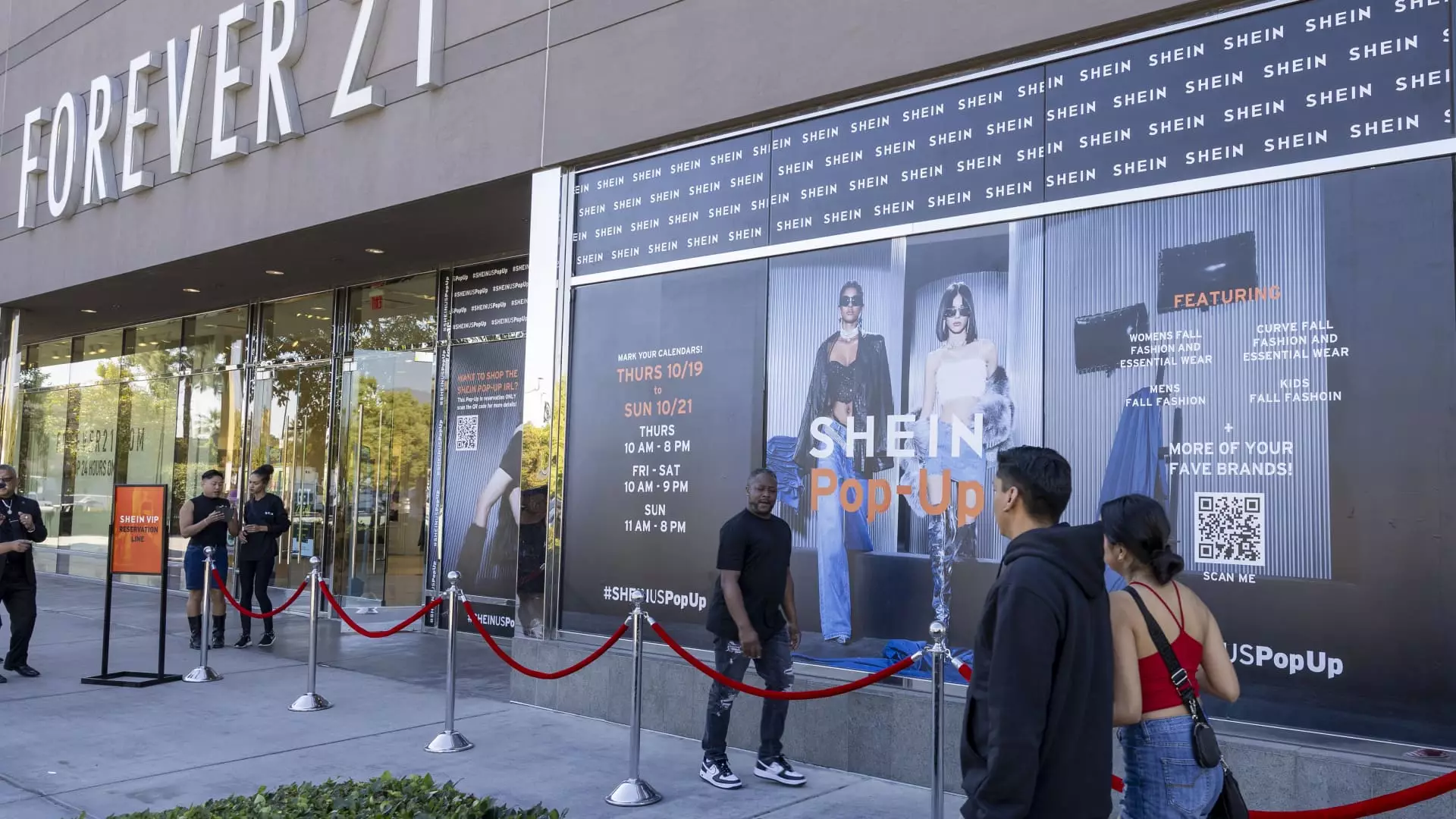Forever 21, a well-known fast-fashion retailer with over 380 stores in the U.S., is facing financial challenges that have prompted it to seek a reduction in rent from its landlords. The company has asked some landlords to slash its rent by up to 50%, indicating the severe impact of declining sales and stiff competition in the fast-fashion market. While the retailer has not enlisted advisors or contemplated a second bankruptcy filing, it is actively engaged in restructuring its leases to lower costs. This development underscores the gravity of Forever 21’s situation as it grapples with inventory mismanagement and struggles to connect with its target consumers.
Legacy Brands and Fast-Fashion Market Saturation
Forever 21’s woes are further compounded by operating in a fast-fashion sector that has become increasingly saturated over the years. The company’s lack of agility in responding to evolving consumer trends and its oversized store footprint have been significant impediments to its growth and profitability. The retailer’s previous bankruptcy filing in 2019, followed by its acquisition by Authentic Brands Group, Simon Property Group, and Brookfield Property Partners, did little to alleviate its financial burdens. Despite closing hundreds of stores post-bankruptcy, Forever 21’s financial standing remains precarious, impacting the performance of Sparc Group, the operator responsible for managing its operations.
One of the critical issues plaguing Sparc Group, the joint venture overseeing Forever 21’s operations, is the challenge of integrating multiple legacy brands and streamlining their various functions. The merger of disparate teams, technology systems, and supply chains has created operational inefficiencies that are undermining Sparc’s financial viability. Furthermore, running brands primarily situated in malls has proven to be a double-edged sword, with expensive leases impeding profitability and draining cash flow. Forever 21’s recurrent tardiness in meeting vendor payments further underscores its unstable financial position, raising concerns about its long-term sustainability in a fiercely competitive retail landscape.
Rise of Ultra-Fast-Fashion Competitors
The rise of ultra-fast-fashion retailers like Shein and Temu has posed a significant threat to Forever 21’s traditional business model. These agile competitors have leveraged on-demand manufacturing and social media trends to outpace legacy brands like Forever 21, rendering them obsolete. The accelerated speed and quality of production by companies like Shein have left traditional retailers struggling to keep up, highlighting the urgent need for a strategic shift in Forever 21’s approach to remain relevant in the market.
Authentic Brands CEO Jamie Salter’s candid admission that acquiring Forever 21 was a blunder underscores the harsh reality facing the company. Salter’s acknowledgment of Shein and Temu’s competitive superiority in supply chain efficiency serves as a cautionary tale for retailers struggling to adapt to the evolving landscape. The strategic partnership between Forever 21 and Shein, though unconventional, signals a willingness to embrace innovative collaborations and explore new avenues for growth. By leveraging Shein’s expertise in design, manufacturing, and e-commerce, Forever 21 aims to revitalize its brand and appeal to a younger, digitally savvy demographic.
Forever 21’s current struggles reflect broader challenges facing traditional retailers in an era dominated by ultra-fast-fashion disruptors. The company’s efforts to renegotiate leases, streamline operations, and forge strategic partnerships are crucial steps towards repositioning itself in a competitive market. However, the road ahead remains fraught with uncertainties, requiring a radical shift in mindset and business strategy to thrive in an ever-changing retail landscape.

